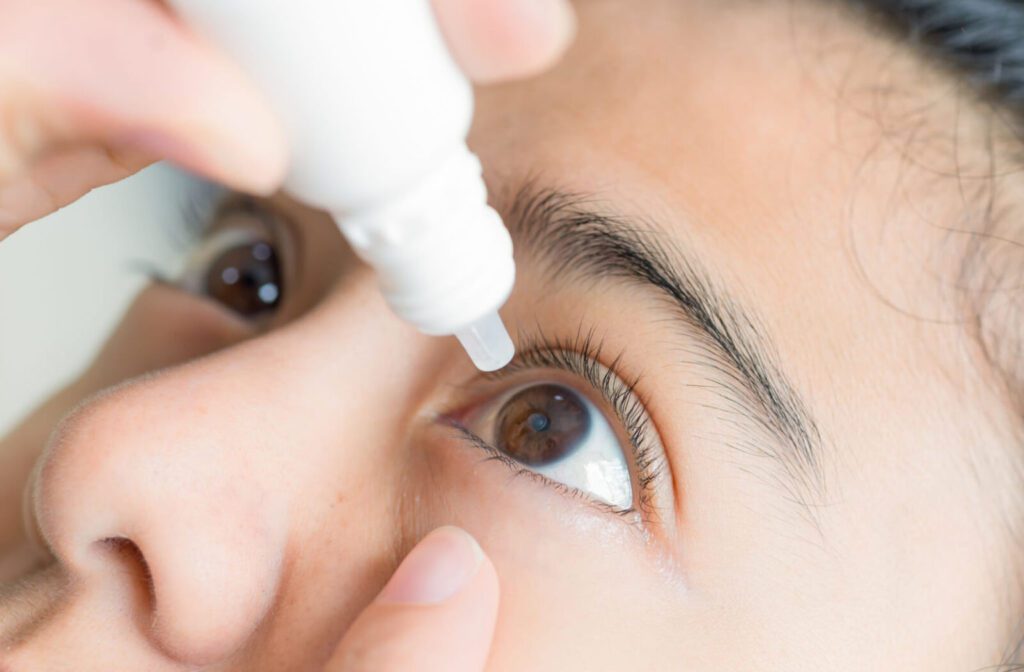Table of Contents

Introduction
Myopia is a common eye condition that can be diagnosed during a comprehensive eye exam. Typically, the condition stabilizes in adulthood. However, depending on the severity and speed of progression, the eye doctor may prescribe some form of myopia control treatment.
This article dives into what myopia is and why it’s important that it’s controlled in many cases. We’ll also look at commonly used myopia control for children. Finally, we’ll explore a few alternative options for treatment that your eye doctor can recommend.
What Is Myopia?
Myopia is also known as nearsightedness. It affects our vision by making distant objects look blurry, whereas things close to you look clear. This refractive error is caused by the shape of your eye. When light passes through the misshapen cornea, it bends inaccurately.
Typically, this condition is diagnosed in children or adolescents. However, it often stabilizes by itself between the ages of 20 and 40. The type of treatment the optometrist recommends depends on how severe the myopia is and how quickly it progresses.
Symptoms of Myopia
An optometrist can easily diagnose the condition. However, if your child hasn’t had eye exam in a while, there are certainly some symptoms to watch out for that could indicate myopia:
- Headaches
- Strained eyes
- Constantly squinting
- Wanting to sit close to the front of the class
- Lots of blinking
- Lots of eye rubbing
- Sitting close to the television
If you notice any of these signs, it’s a good idea to see the eye doctor as soon as possible. The sooner that myopia is diagnosed and treated, the greater the chances of minimizing the lifelong effects of the condition.
What Is Atropine?
There are several ways that myopia can be controlled and treated. Atropine eye drops are one commonly used form of control in childhood myopia. These eye drops are also frequently used to dilate the pupils for eye exams or to treat a lazy eye.
However, in small doses (0.01% to 1%), clinical studies have shown it to be an effective form of myopia control in children. Similar studies have been done on adults but did not show the same benefits as it did for children. This is largely due to the fact that an adult’s eyes begin to stabilize on their own as they age.
How Does Atropine Treat Myopia
Because the research suggests that many forms of childhood myopia are caused by focusing fatigue, atropine is a good choice. When the drops are put in the eye, they dilate the pupils, and the eye’s focusing muscle is paralyzed for a short time. In turn, this relaxes or disables the eye’s natural focusing mechanism.

Alternative Ways to Treat Myopia
Not everyone is comfortable with Atropine eye drops, and they aren’t right for everyone, either. Fortunately, there are several other ways of controlling myopia available.
Alternatives to atropine include:
- MiSight® 1 day: Daily disposable contact lenses for children that help slow myopia progression. They work by slowing axial elongation by using various vision correction and treatment zones.
- Ortho-K Lenses: These are special lenses that are only worn at night. They work by making minor modifications to the corneal surface, which reduces or eliminates the need for any vision correction when not wearing them. This treatment is only effective when done consistently because it doesn’t permanently change the shape of the cornea.
- Dual Focus Contact Lenses: These lenses provide similar results as ortho-k lenses. However, they are growing in popularity due to easier adaptation, better comfort, and the fact that they can be made for different prescriptions or eye shapes.
- Prescription Glasses: While they don’t necessarily control myopia or slow its progression, prescription eyeglasses are a common way of correcting the condition. During a comprehensive eye exam, the optometrist determines a person’s prescription. For example, glasses may be the best treatment option if an adult has myopia that substantially affects their vision.
- Laser Eye Surgery: Another procedure that an adult may be a candidate for is laser eye surgery. Not everyone is a candidate, but if the eye doctor determines it’s a viable solution, this is often a permanent correction, so the patient won’t need glasses or contact lenses again.
Discover Your Options Regarding Myopia Control
According to the American Optometric Association, myopia affects 30% of the population in America. Even though it’s common, it’s still highly treatable. If it’s diagnosed and controlled early enough, there’s even a chance that the person won’t need correction later in life.
If you or a child are dealing with myopia, options are available. Give us a call at Golden Vision today. The professional staff can answer your questions and book you in to see one of our qualified optometrists. They can discuss all myopia control and treatment options with you.

